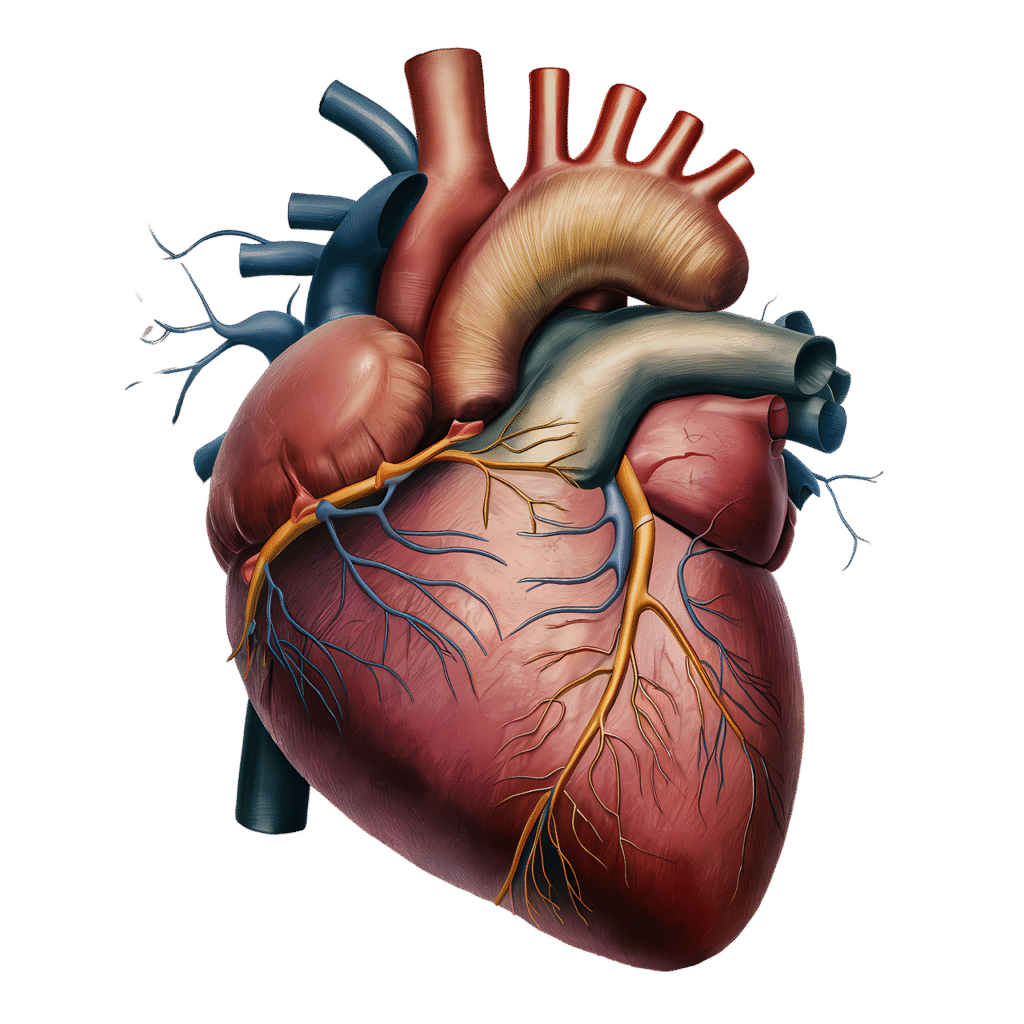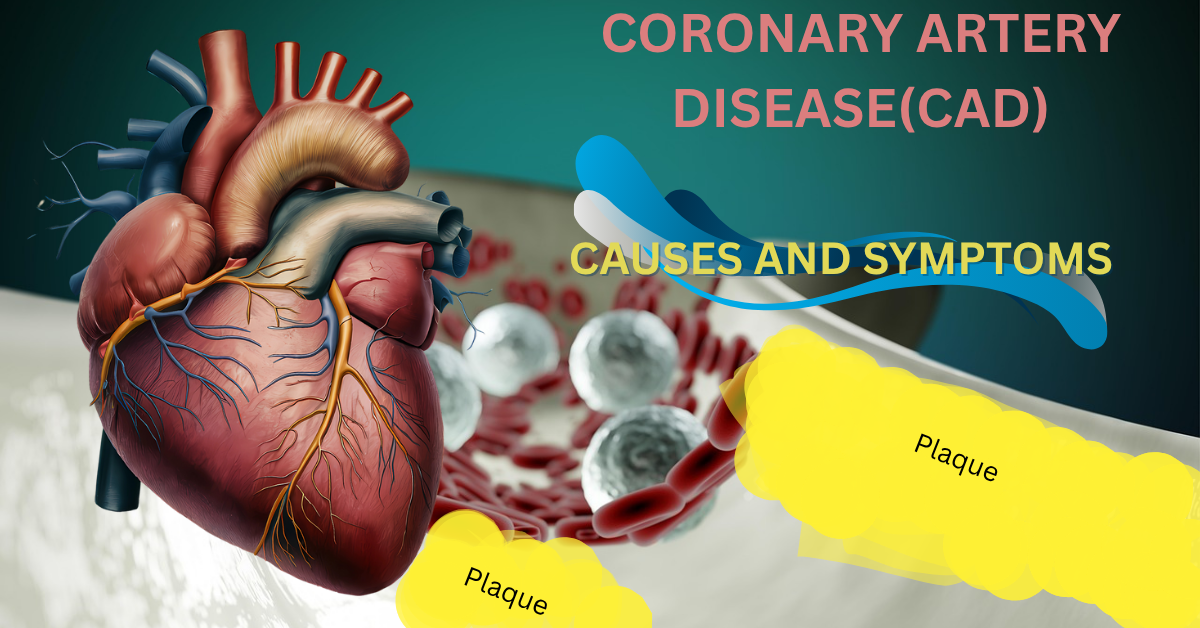Your Heart Beats Every Second—Silently Saving Your Life
Every single second, without pause or complaint, your heart keeps beating—pumping life-giving blood through a vast network of arteries to every part of your body. Most of us live unaware of this silent miracle, And most of us never even think about it—until something unfortunate happens to us. Today, let’s talk about a silent enemy: Coronary Artery Disease (CAD).
CAD is not a disease that strikes overnight. It takes years to develop. To understand how, we must first grasp two important terms: atherosclerosis and plaque. Atherosclerosis is the process that results in plaque, and plaque is the end product of that process.
CAD primarily develops due to an unhealthy lifestyle—factors like smoking, diabetes, high blood pressure, and high LDL cholesterol silently damage the arteries. LDL cholesterol, often termed “bad cholesterol,” enters the inner walls of the arteries and becomes oxidized, triggering inflammation. In response, white blood cells (monocytes) rush to the site and begin engulfing the oxidized LDL, turning into foam cells. When smooth muscle cells and fibrous tissue build up, these foam cells progressively create a fatty streak that solidifies into a plaque. The artery narrows as a result, reducing blood flow.
A heart attack could occur if the plaque bursts, forming a clot that could unexpectedly obstruct the artery.
What makes CAD particularly dangerous is its silence. You may feel nothing for years—until one day, a sharp chest pain while climbing stairs or walking briskly becomes your first warning. It might seem like a simple muscle ache, but it could be your heart signaling that it’s not getting enough oxygen-rich blood.
If left unchecked, these blockages can worsen over time or rupture suddenly, leading to life-threatening events.
But here’s the good news:
If we understand what Coronary Artery Disease (CAD ) is, how it develops, and recognize its warning signs, we can take control. Through small lifestyle changes and regular medical checkups, we can protect our hearts and keep this silent enemy at bay. Your heart works so hard for you; take care of it in return.
Causes and Risk Factors of Coronary Artery Disease (CAD)
Plaque, which is a mixture of cholesterol, fat, calcium, and other materials, slowly accumulates in the coronary arteries and causes coronary artery disease. This process is known as atherosclerosis.
Here are the main causes and risk factors:
- High cholesterol: When levels of LDL (bad cholesterol) are high, it sticks to the artery walls and forms plaque.
- High blood pressure (Hypertension): Constant high pressure can damage artery walls, increasing the risk of plaque formation.
- Smoking: Chemicals like nicotine damage the arteries and speed up plaque build-up.
- Diabetes: High blood sugar raises cholesterol and worsens arterial damage.
- Obesity and lack of physical activity: Excess body fat, especially around the abdomen, raises both cholesterol and blood pressure.
- Unhealthy diet: Frequent intake of fried foods, salt, sugar, and processed foods raises the risk.
- Stress: It increases blood pressure and may lead to unhealthy habits.
- Family history: If close relatives have had CAD, the risk is higher.
- Age and gender: Risk increases with age. Men are likely to develop CAD earlier, while in women, the risk rises after menopause.
Common Symptoms of Coronary Artery Disease (CAD)
Just as hypertension is called a “silent killer,” Coronary Artery Disease (CAD) is often referred to as a “silent enemy.” It can quietly progress over many years without any noticeable symptoms. Unfortunately, in the early stages, most people do not feel any signs.
When symptoms do appear, they may include:
- Chest discomfort or pain (Angina): A feeling of heaviness, pressure, tightness, squeezing, or burning in the chest—especially during physical activity or emotional stress.
- Shortness of breath: Difficulty breathing even after light activity such as walking or climbing a few steps.
- Fatigue or unusual tiredness: Feeling unusually tired or exhausted after doing simple tasks that were once easy.
- Other areas of discomfort: Your neck, jaw, shoulders, arms, or back may be troublesome.
- Heart attack symptoms: Severe and persistent chest pain, sweating without exertion, sudden nausea or vomiting, or feeling dizzy or lightheaded.

Precautions
| Area | What you should Do |
| Diet | Low-fat, low-salt, more fruits & veggies |
| Exercise | 30 min daily walk or physical activity |
| Smoking | Completely avoid |
| Alcohol | Limit or avoid |
| Stress | Yoga, meditation, stay calm |
| BP Control | Regular check & medicine if needed |
| Diabetes Control | Monitor sugar, follow healthy diet |
| Cholesterol Control | Avoid fried food, may need statins |
| Checkups | Regular BP, sugar, lipid profile |
| Family History | Be more careful, take doctor’s advice |
Treatment Options for Coronary Artery Disease (CAD)
If lifestyle changes alone are not enough to manage symptoms, doctors may recommend medical treatment or procedures based on the severity of the condition.
Medications may include:
- Statins: to lower cholesterol levels
- Blood pressure drugs: to regulate elevated blood pressure
- Blood thinners: are used to avoid blood clots.
- Anti-anginal drugs: to relieve chest pain and discomfort
Procedures:
- Angioplasty with stent placement – A balloon is used to open the narrowed artery, and a stent (a small mesh tube) is placed to keep it open and restore normal blood flow.
- Coronary Artery Bypass Grafting (CABG) – A healthy blood vessel from another part of the body is used to bypass the blocked artery, improving blood supply to the heart.
Your general health and the degree of blockage will determine the treatment option
Early and appropriate care can help you live a healthier, longer life.
When to See a Doctor for Heart Health
You should see a physician if you suffer from any of the following conditions:
- Chest pain, tightness, or a burning sensation in the chest—especially during physical activity or stress
- Having trouble breathing or experiencing dyspnea.
- Unusual or unexplained fatigue.
- Irregular heartbeat, sudden dizziness, or fainting
- Heart disease in the family, particularly if someone had it when they were young
Additionally, routine examinations are crucial if you have:
- High blood pressure
- High cholesterol
- Diabetes
- Obesity
- A habit of smoking
Early detection can greatly reduce the risk of serious heart problems like CAD.
Frequently Asked Questions
What is Coronary Artery Disease (CAD)?
Coronary Artery Disease is a condition where the arteries supplying blood to the heart become narrowed or blocked due to plaque buildup (atherosclerosis), reducing blood flow to the heart muscle.
What are the main causes of Coronary Artery Disease?
The main causes include high cholesterol, high blood pressure, smoking, diabetes, sedentary lifestyle, unhealthy diet, obesity, and family history of heart disease.
What are the major symptoms of CAD?
Common symptoms are chest pain (angina), shortness of breath, fatigue, and sometimes pain in the neck, jaw, back, or arms. Some people may have silent CAD without obvious symptoms.
Who is most at risk for developing CAD?
People over 40, those with high cholesterol or high blood pressure, smokers, diabetics, and those with a family history of heart disease are at higher risk.
Can Coronary Artery Disease be prevented?
Yes! By adopting a heart-healthy lifestyle: regular exercise, balanced diet, avoiding smoking and alcohol, managing stress, and keeping blood pressure and cholesterol in check.
When should I see a doctor?
If you experience chest pain, frequent shortness of breath, extreme fatigue, or have multiple risk factors for heart disease, consult a doctor immediately.
